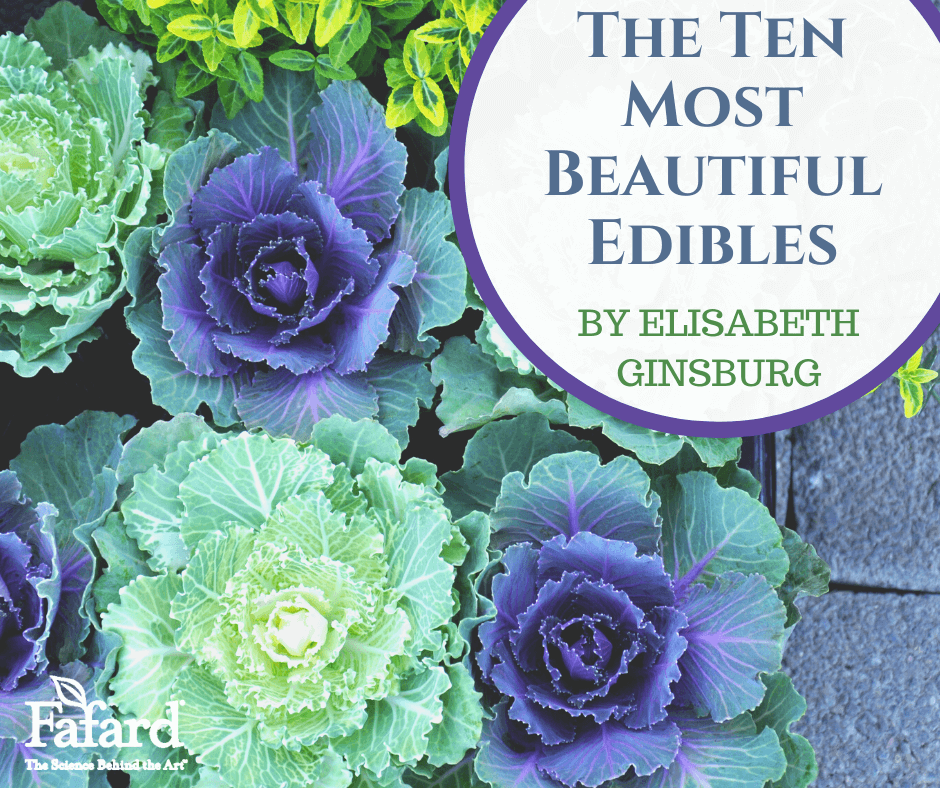
The traditional French potager, or kitchen garden, combined both edible and ornamental elements to create beds that were both beautiful and productive. Given the array of fruit, vegetable, and herb varieties available now, just about anyone can do the same thing.
Grow The Edibles That You Love

Where should you start? As always, grow what you love, starting with edible varieties that you most want to eat. There is no point in raising a beautiful zucchini if you hate that vegetable. Once you know what you want to grow, search through garden centers, online, and catalog vendors to find the most beautiful varieties. Remember that some plants have lovely leaves, others sprout gorgeous flowers, and still, others boast flashy stems. A few combine all of those things.
Next, decide whether you want to grow from seed or buy as small starter plants. Starter plants get larger sooner, but the selection of varieties may be smaller. Growing from seed requires more patience, but the choices are larger. Your potager can be beautiful either way.
The Ten Most Beautiful Edible Crops
Bushy Blueberries
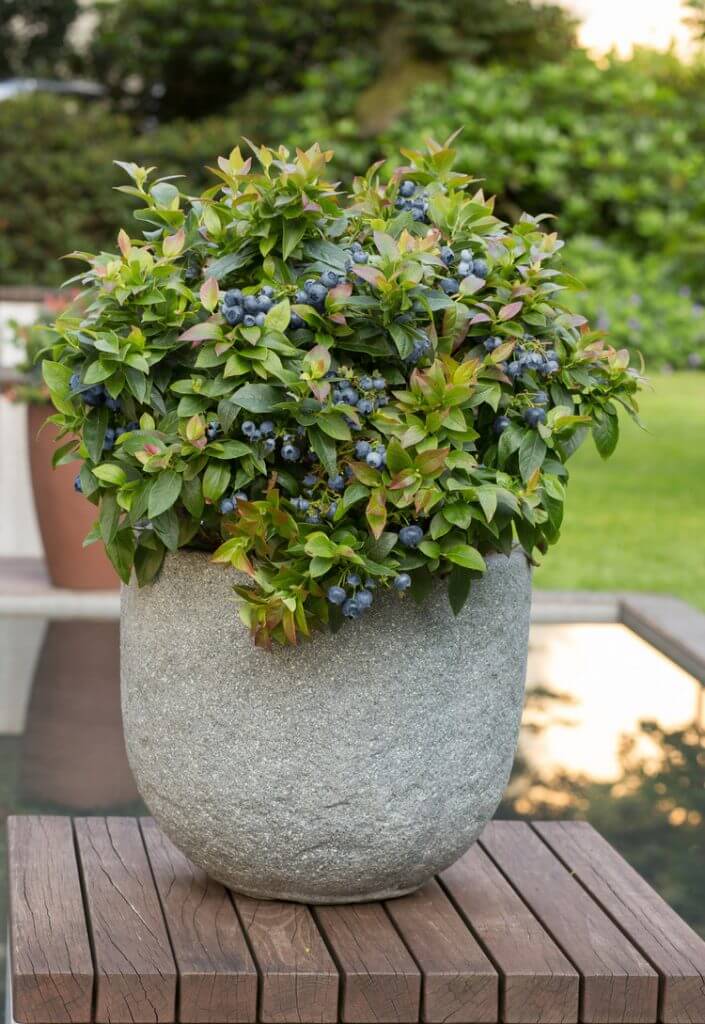
Blueberries are three-season stunners, sporting bell-shaped pinkish-white flowers in spring, glaucous blue fruits in early summer, and bright red fall leaves. The most widely grown and hybridized type is the highbush blueberry (Vaccinium corymbosum), including the popular large-fruited ‘Chandler’, but these tend to be leggier and less bushy. For tidy, attractive landscape shrubs with loads of berries, the better option is lowbush (Vaccinium angustifolium) types, like ‘Top Hat’, which is compact, bushy, and has nice, dense, foliage. Container and small-space gardeners may prefer designer varieties, like the boxwood-like Jelly Bean®, which grows only 12 to 24 inches tall and wide, bears lots of small berries, and has flame-red fall color. All crave fast-draining, acid soil, and full sun.
Personnel at your local garden center can help you choose species and varieties suitable to your region and space situation.
Feathery Fennel

Anise-flavored fennel (Foeniculum vulgare), a member of the carrot family, is a beautiful garden plant in either its green or purple-leafed (Foeniculum vulgare ‘Purpureum’) forms. Leaf fennel is grown for its decorative, feathery, sweet-tasting leaves. Bulb fennel, like the ‘Orazio’ variety, is grown for its swollen bulbs. In both types, all parts of the plant are edible. The flowers will remind you of fennel’s carrot-family relative, Queen Anne’s lace or wild carrot, and will eventually provide fennel seeds for culinary use. Swallowtail butterflies also use the fennel as a host plant, making the kitchen garden even more beautiful.
Striking Swiss Chard
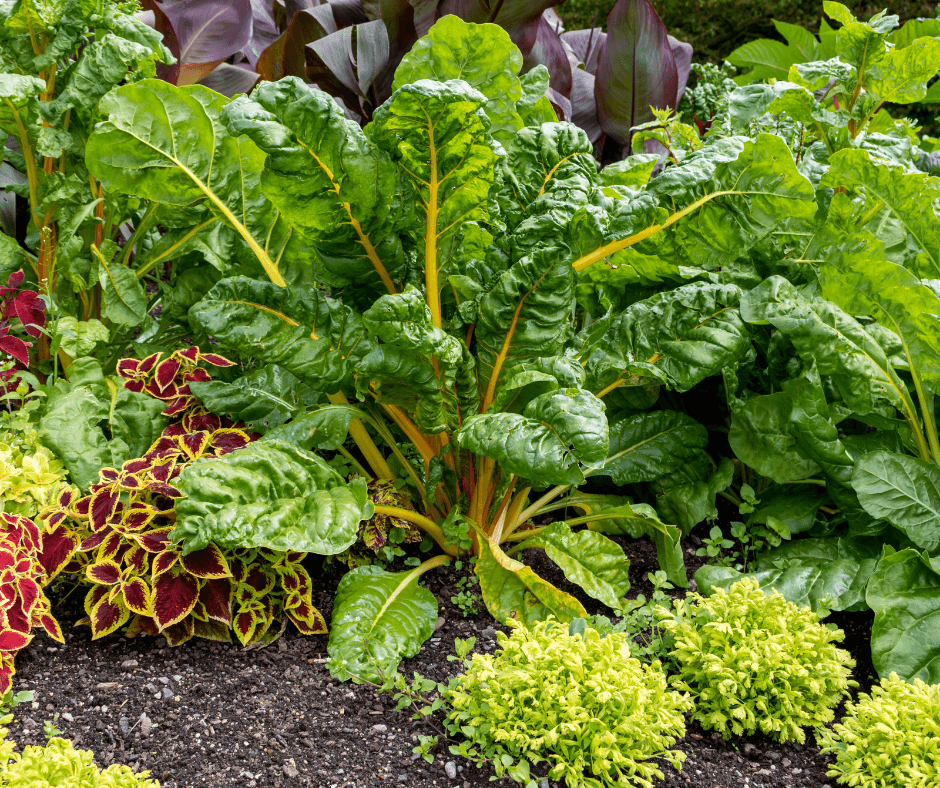
Spinach-like Swiss chard (Beta vulgaris var. cicla) leaves can be harvested when young or mature and eaten raw or cooked. In the garden, the showy stems of ‘Ruby Red’ or ‘Bright Yellow’ or Bright Lights Mix light up the landscape. These relatives of common beets grow best in sunny spots where the soil is somewhat alkaline. Swiss chard tastes sweeter as fall temperatures drop and will continue to ornament your garden and provide culinary ingredients well into late fall. Plants may even overwinter in mild- to warm-winter climates.
Colorful Winter Squash
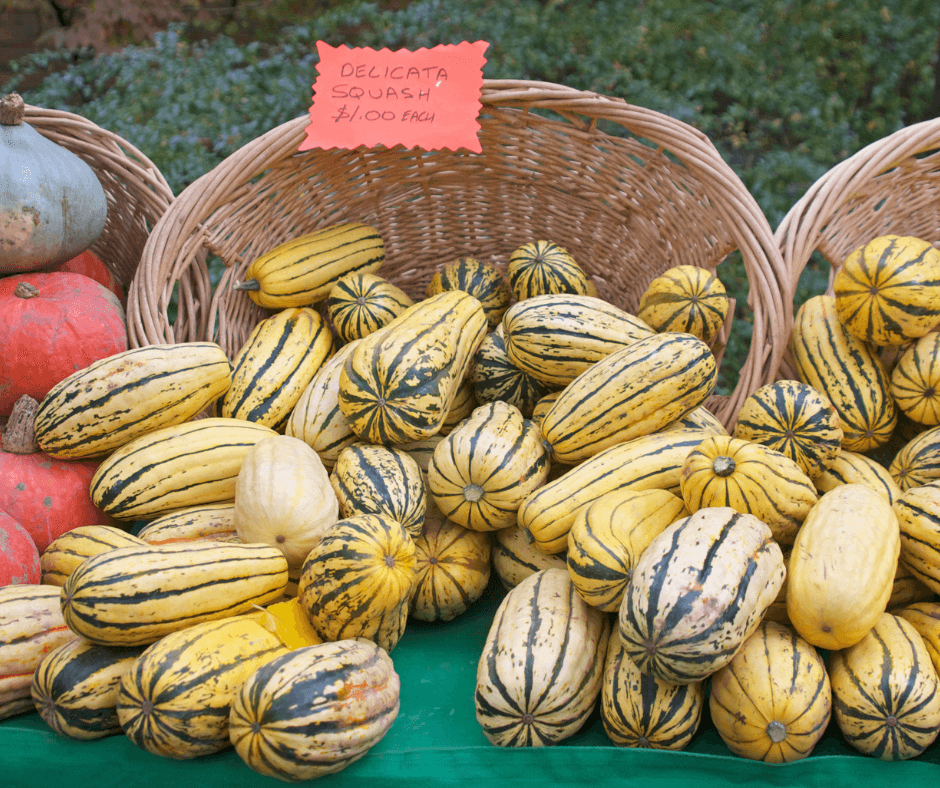
The cucurbit family of plants includes all kinds of squashes, melons, and cucumbers. Most are edible, though a few, like ornamental gourds, are grown mostly for decorative value. All start with large, funnel-shaped blooms, and some yield fruits pretty enough to ornament even the most lavish potager. Among the showier cucurbits is delicata squash (Cucurbito pepo ‘Delicata’), a winter squash that features cylindrical fruits striped in cream, yellow, and green. The skin is thin and the flesh is sweet and especially good baked. Another winter squash for bright color in the garden and on a harvest table are Japanese kabocha squashes. The deepest red ‘Red Kuri’ (C. maxima ‘Red Kuri’) has very sweet flesh and is an excellent winter keeper.
Plant squash in hills—8- to 10-inch tall soil mounds—provide plenty of water, and make sure the plants have enough sunny space, as they tend to sprawl. The vines can also be trained to grow up sturdy supporting structures like trellises or fences.
Flashy Cabbage

Some gardeners grow ornamental cabbages and kales purely for fall decorations. But edible cabbage varieties (Brassica oleracea Capitata Group) can be just as lovely. One beauty is ‘Deadon’, a Savoy-type cabbage with brilliant magenta-purple leaves. Another is ‘Red Express’, an early-yielding variety with purple and grey-green leaves. In both varieties, the color deepens as fall weather cools off.
Cabbages like rich soil, full sun, and regular moisture, and benefit from soil amended with a product like Fafard Premium Natural and Organic Compost.
Colorful Okra

If you don’t grow okra (Abelmoschus esculentus) for its tasty pods, you might be tempted to grow it for the flowers alone or the attractive dried winter pods. The blooms and leaves betray okra’s membership in the mallow family (Malvaceae), which is also home to hibiscus and hollyhocks. The main stalks grow somewhat slowly, but the flowers–pale yellow trumpets accented by maroon centers—are worth the wait. Eventually, the edible pods appear. The red pods of ‘Bowling Red‘ are especially pretty. The bold plants reach a whopping 7-8 feet tall.
Okra loves warmth, so plant it when day and nighttime temperatures are above 60 degrees Fahrenheit. While not as thirsty as some other edible plants, they appreciate at least one inch of water per week, along with enriched soil.
Scarlet Runner Beans
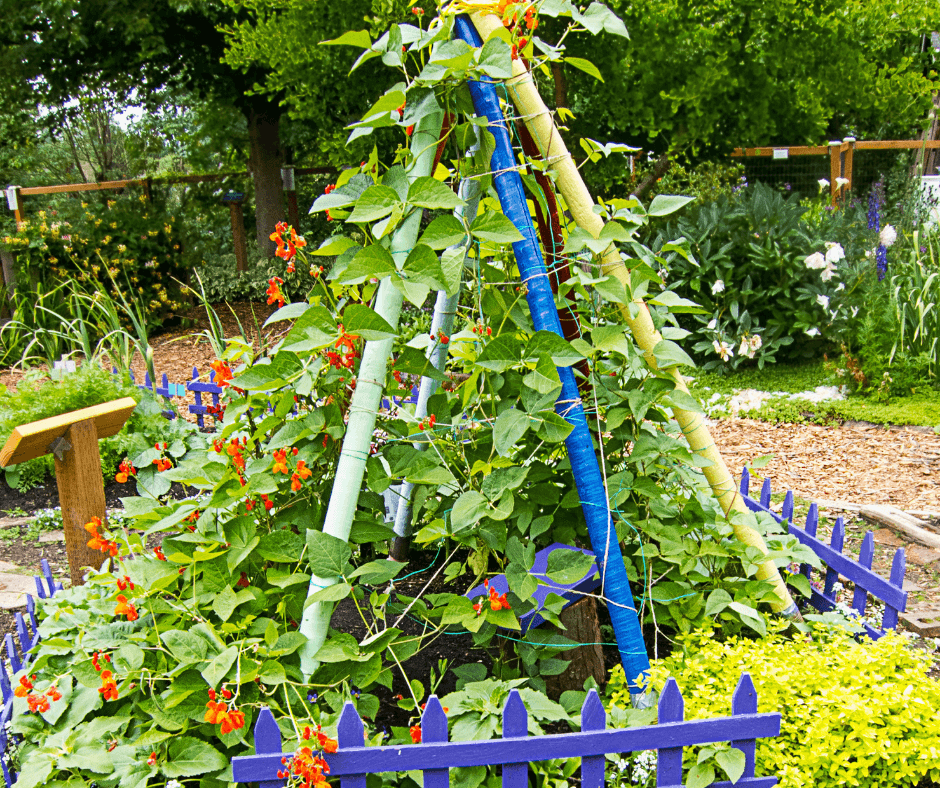
Hummingbirds, butterflies, and humans are all drawn to the brilliant red flowers of scarlet runner beans (Phaseolus coccineus). The flowers are edible, but leaving them on the fast-growing vines yields tender beans after about 45 days. Picking the beans triggers more blooms and fruits, so harvest often. Trained up teepees, trellises, or other supports located in sunny spots, scarlet runner beans make great focal points for the vegetable garden.
Purple Cauliflower
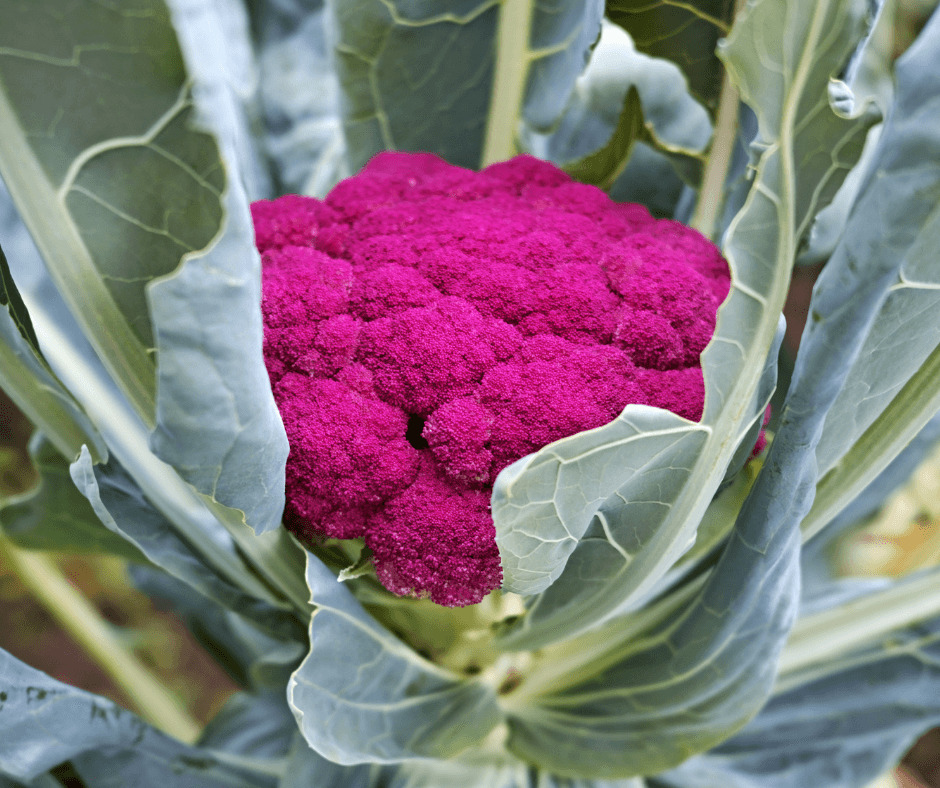
Cauliflower (Brassica oleracea Botrytis Group) is showing up everywhere these days, from pizza crusts to cauliflower “rice”. Those who really prize the cruciferous vegetable, like it best straight from the garden. That garden can be much more beautiful when adorned with a purple cauliflower variety, like ‘Grafitti’ or ‘Purple of Sicily‘.
Cauliflower is a cool-season species that should be planted in early spring or early fall and receive consistent moisture. Harvest when the heads are 6 to 8 inches wide.
Pink-Flowered Strawberries
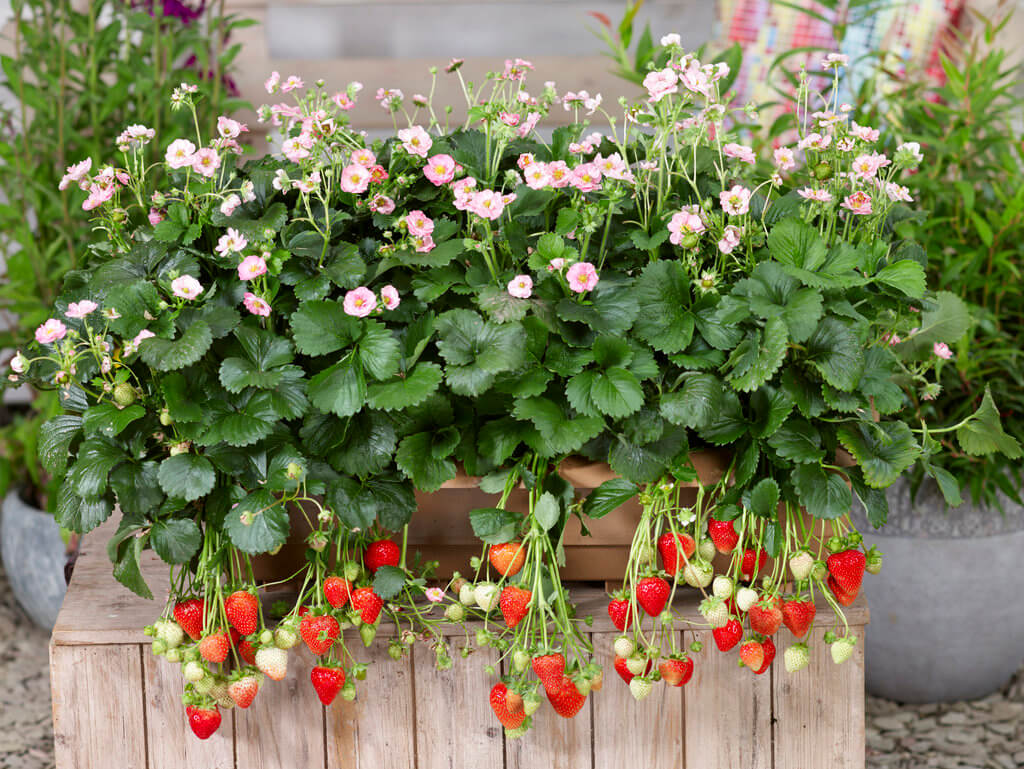
Strawberry flowers are normally white and winsome, but for a little more color in containers or at the edges of beds, try one of the pink-flowered varieties, like ‘Toscana’, with its deepest magenta flowers, or the double-pale-pink flowered Berred Treasure Pink. Both plants produce pink flowers followed by juicy, red berries. For best results, plant in a sunny spot with well-drained soil and water regularly. Strawberries are also right at home in pots filled with Fafard Natural & Organic Potting Mix. Like many strawberries, the plants reproduce by means of runners.
Variegated Lemon Thyme
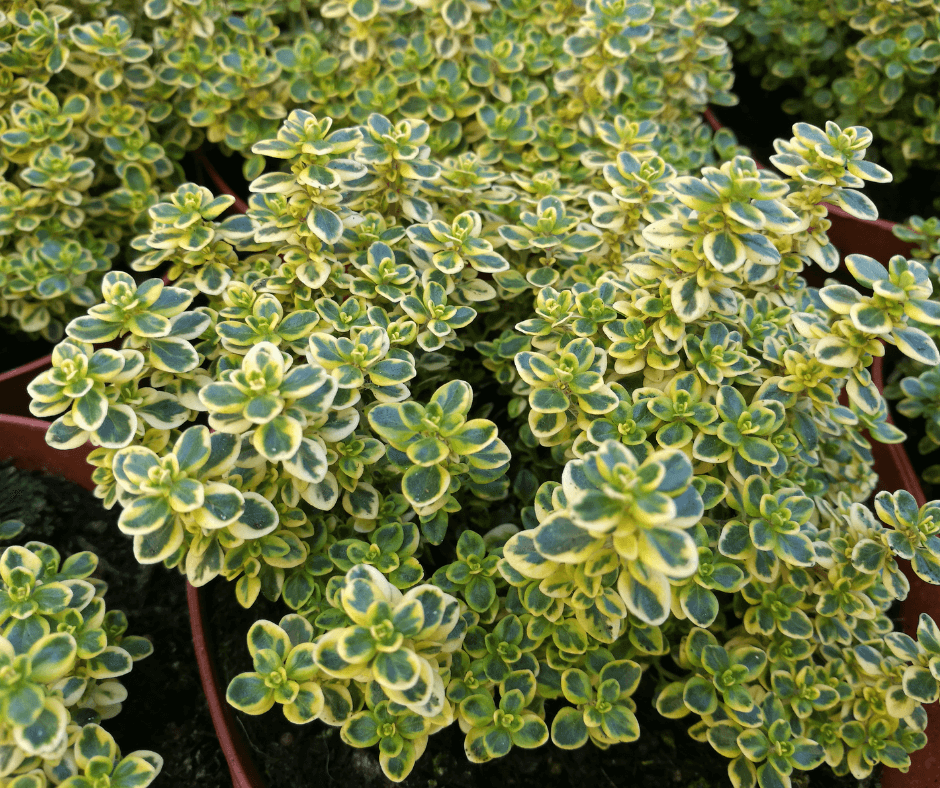
Delectable and beautiful, variegated lemon thyme (Thymus x citriodorus ‘Variegata Aurea’) is another plant that works equally well as an edger, or a rock garden or container subject. The tiny fragrant leaves are green edged in creamy yellow and lemon-scented. Clusters of purple tubular flowers appear in July and beckon pollinators. Harvest sprigs of leaves regularly to keep stems from becoming woody. Like other thymes, the variegated variety prefers full sun and well-drained soil.

